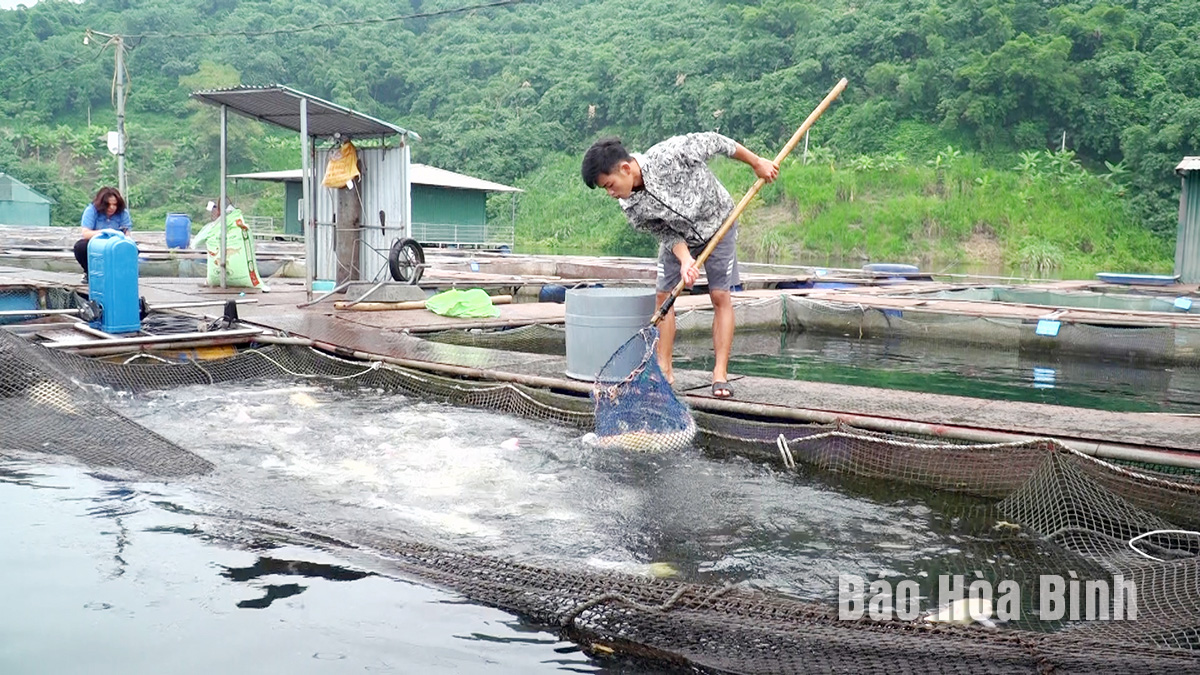



Currently, Hoa Binh lake has nearly 5,000 fish cages, contributing to producing many special aquatic products serving locals and tourists.
Fish farming on Hoa Binh lake has been developing rapidly, with the number of cages increasing to nearly 5,000 in 2023 from over 2,300 in 2015, while the total aquaculture output has reached nearly 5,390 tonnes. Alongside, exploitation output also rose to 2,400 tonnes in 2023 from 1,500 tonnes in 2015.
Meanwhile, thanks to its stunning beauty and a series of historical, cultural, and spiritual destinations, Hoa Binh lake boasts ideal conditions for tourism development. In 2016, the Prime Minister approved a plan on turning Hoa Binh lake into a national tourism site to 2030, which is a favourable condition for tourism promotion on the area.
Currently, 16 projects in the field of services, culture, and tourism have been licenced in the Hoa Binh lake tourist site. Last year, the site welcome more than 710,000 visitors, including 38,000 foreigners.
Recognising the increasing demand by tourists, many households living along the lake’s banks have focused on fish farming in association with tourism development. By now, 20 households have registered to provide ecotourism services.
In order to ensure that the orienations, targets, and tasks in fisheries development on the Hoa Binh lake are built in line with the planning for Hoa Binh lake national tourism site to 2030, the People’s Committee has launched a project to promote fisheries in association with tourism development on Hoa Binh lake to 2030.
Under the project, Hoa Binh will make sure that aquaculture development on the lake is suitable to the planning, while focusing on promoting tourism using high and environmentally-friendly technologies following sustainable linkage chain direction.
Along with optimising the potential of water surface, natural landscapes and cultural identity of local communities for tourism development, the province will focus on expanding its infrastructure system to attract more visitors.
At the same time, the locality will select farmed aquatic species with high economic value, creating unique, endemic, branded, and reputable aquatic products with high quality for tourist consumption, processing, and export.
The province will list and number current fish farming cages and re-organise them into eight concentrated farming areas in association with tourism development, thus providing entertainment services for tourists at the sites, enhancing productivity and reducing environmental pollution.
Particularly, the locality will call for investors to the field of aquatic product processing, and encourage the expansion of handicraft establishments to process products from local aquatic specialties under the One Commune - One Product (OCOP) Programme.